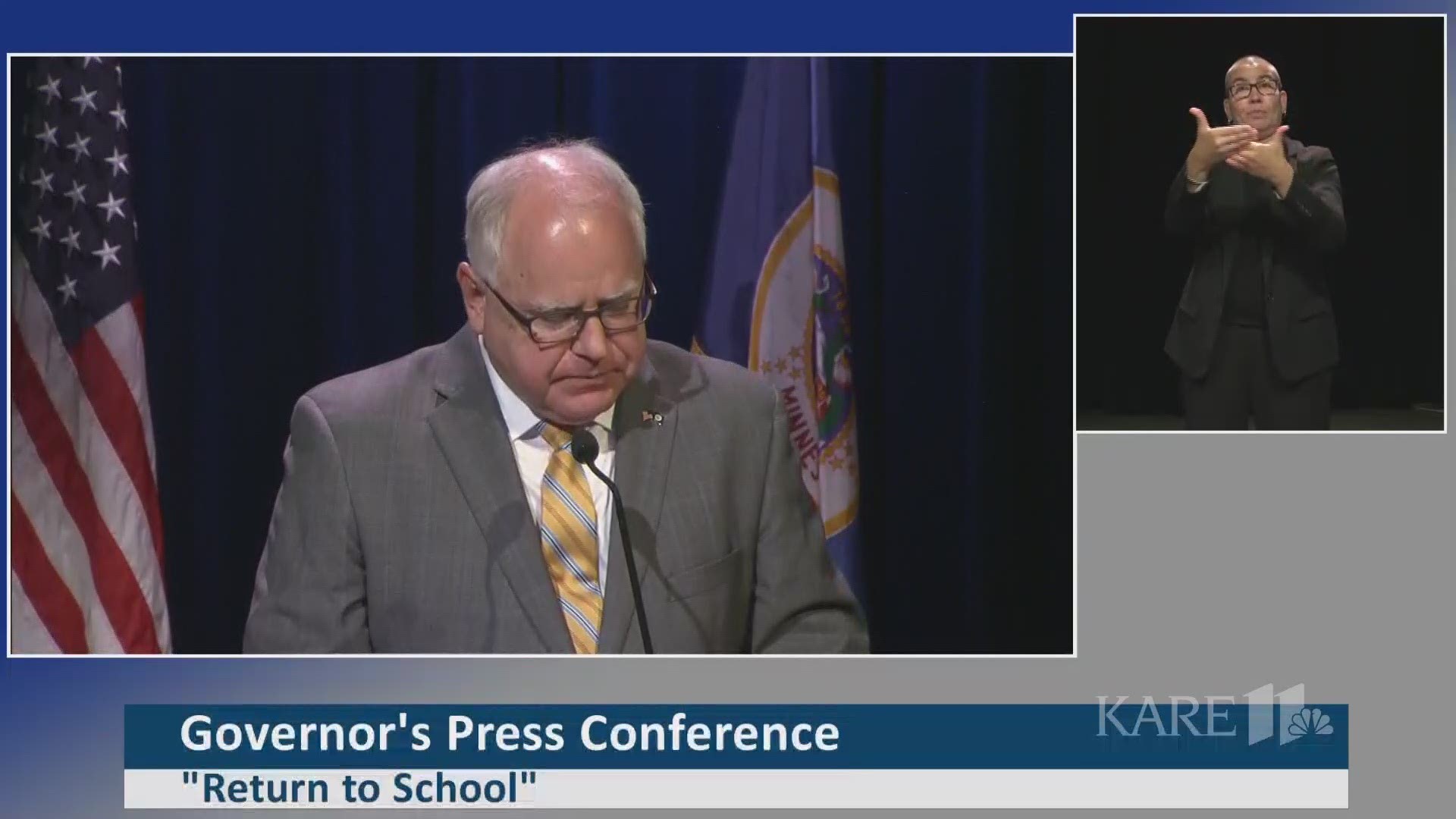ST PAUL, Minn. — Governor Tim Walz announced his administration's guidance for the fall school year on Thursday. The state will work with school districts to make individual decisions about whether students go back to school in person this fall.
Under the official Safe Learning Plan, the Minnesota Department of Health (MDH) urges districts to start by looking at county-level data for COVID-19 cases to determine the right base learning model.
MDH will be advising schools about the bi-weekly COVID-19 case rate for each county, per 10,000 people, based on the date a person was tested. MDH said a rate of 10 or more cases per 10,000 people is considered an "elevated risk of disease transmission within the local community."
The case data then leads to five recommended learning models:
- 0-9 cases per 10,000: In-person learning for all students
- 10-19 cases per 10,000: In-person learning for elementary students, hybrid learning for secondary students
- 20-29 cases per 10,000: Hybrid learning for all students
- 30-49 cases per 10,000: Hybrid learning for elementary students, distance learning for secondary students
- 50 or more cases per 10,000: Distance learning for all students
Governor Walz cautioned Minnesotans not to jump to any conclusions based on the current data available as of mid-July, and that it should not be taken as a definitive decision for any district's plans for fall.
On its website, MDH said the county-by-county data would be updated weekly, on Thursdays.
State officials said Thursday that exclusively based on current county numbers - which are not the only factor - if school started today, there would be 181 districts fully in person, 230 with in-person elementary and hybrid secondary, 107 completely hybrid, seven with hybrid elementary and distance secondary, and nine with distance learning for all.
Health commissioner Jan Malcolm also cautioned that the county case data alone doesn't automatically determine a specific school district's learning model.
After reviewing the county data, the next steps in the Safe Learning Plan call for districts to consult with health officials about the "local epidemiology behind county-level data to assess whether increases or higher numbers of cases are likely the result of isolated outbreaks or whether they may be indicative of more widespread community transmission."
Districts are then asked to evaluate their ability to implement best health practices for any learning plan. State officials acknowledged in their Thursday news conference that some rural Minnesota districts may not have facilities adequate for maintaining public health guidance.
Education commissioner Mary Cathryn Ricker said she expects districts and charter schools will inform families of their decision at least one week before beginning any learning model.

